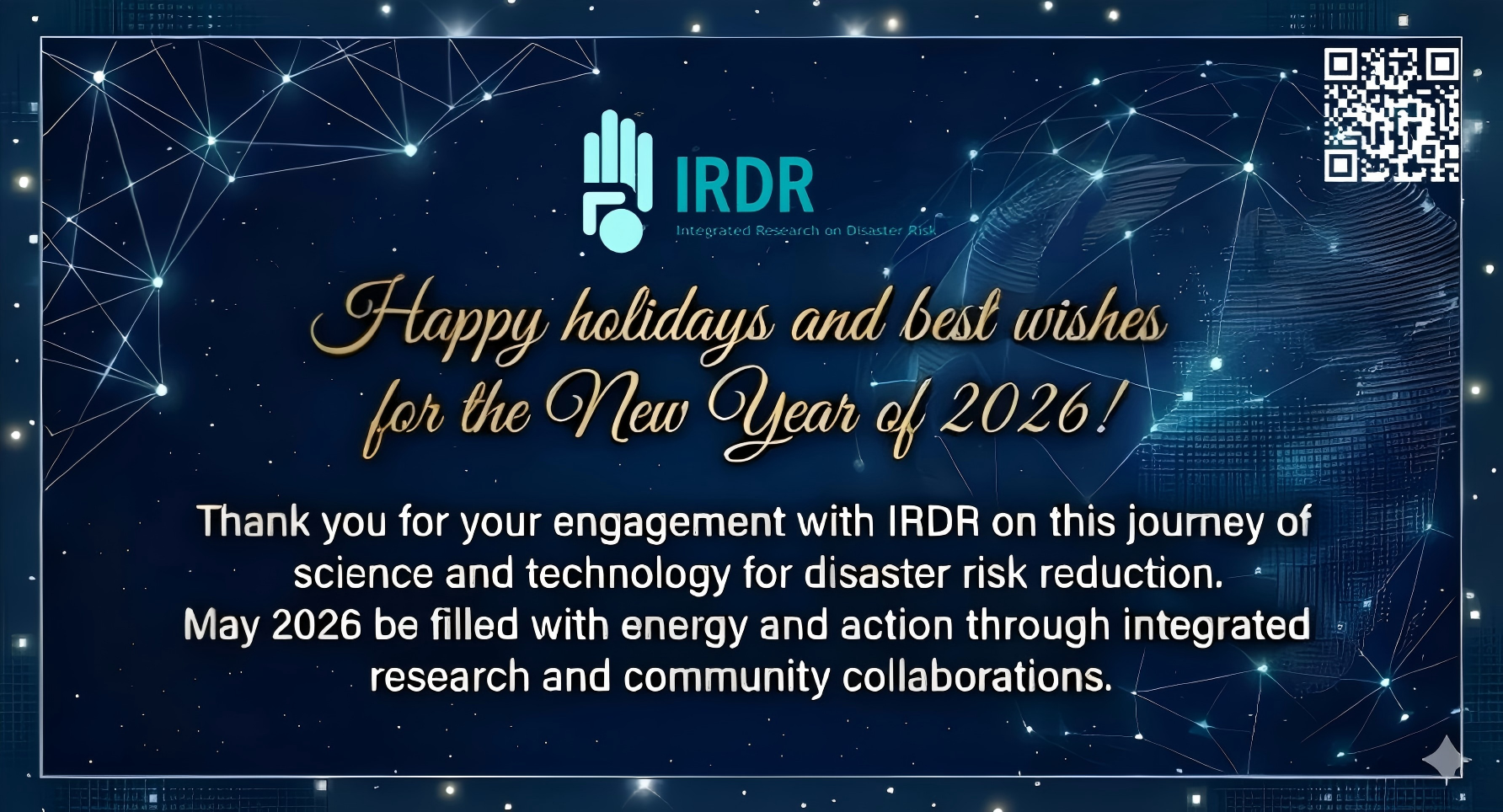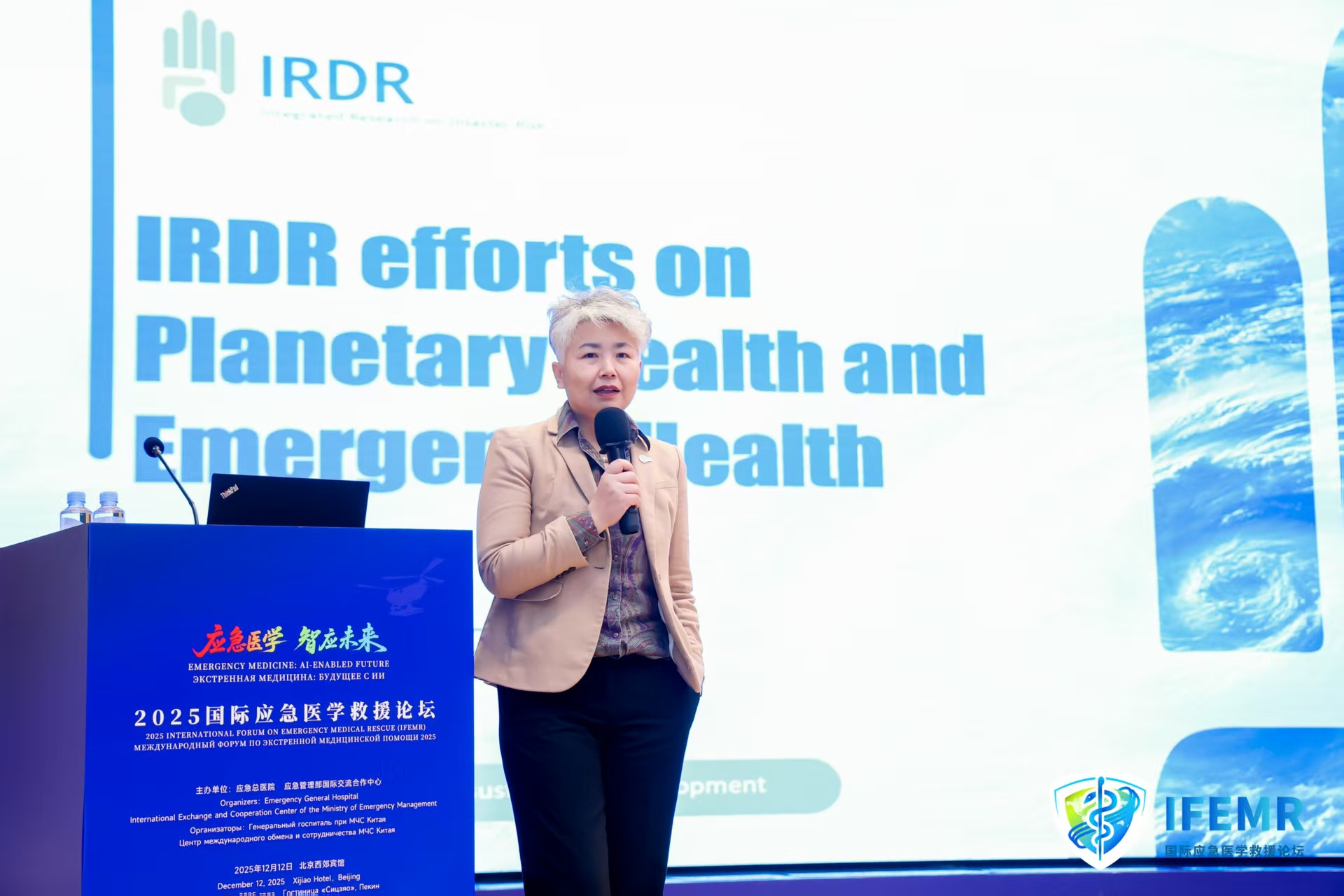BEIJING – Mark Pelling from the Department of Geography, King’s College London outlined international processes and IRDR’s role for framing disaster risk reduction in his presentation during the Plenary Session of the IRDR Conference 2014. PELLING emphasized how disaster risk management is entering a new period of increasing international relevance and policy urgency with support for academic and policy actors.
According to PELLING, the Fifth Assessment Report (AR5) of the Intergovernmental Panel on Climate Change (IPCC) focuses on impacts, adaptation and vulnerability. With 243 authors covering 70 countries and 12,000 references, the report shows that impacts attributed to climate change are now widespread, stronger and involve more effects on human systems. Vulnerability to disasters reveals the lack of capacity to cope with current climate (weather) hazards, hence, rapid mitigation must reduce current risks and adaptation must prepare for future risks.
Another document discussed by PELLING, the IPCC Special Report on Managing the Risks of Extreme Events and Disasters to Advance Climate Change Adaptation, states that urban Climate Change Adaptation (CCA) can build resilience and enable sustainable development. “Much of key and emerging global climate risks are concentrated in urban areas hence, action in urban centres is essential to successful global CCA,” said PELLING. Urban adaptation can deliver mitigation co-benefits. He further stated that urban CCA opens opportunities for incremental and transformative development. Effective urban adaptation is possible and can be accelerated.
PELLING also stated that the Sustainable Development Goals (SDG) process with the first order draft dated 4 June 2014 includes disaster related management themes in six goals.This includes proposed goals for strengthening early warning and disaster risk reduction systems and related capacities. They aim to build resilience and protect the poor and those in vulnerable situations from disasters and shocks, including climate-related extreme events by 2030. The SDG also proposes to fully implement agricultural practices that strengthen resilience and adaptation to extreme weather and natural disasters and improve effectiveness of addressing humanitarian food emergencies by 2030. The SDG proposal also aims toward a percentage decrease in mortality and economic losses caused by natural and human-induced water-related disasters through supporting the development of quality, reliable, sustainable and resilient infrastructure for transport, energy, water and communications. The proposal also outlines a percentage increase in number of human settlements adopting and implementing policies and plans towards resilience and adaptation to climate change and natural disasters. Finally, the proposal covers goals to build resilience and adaptive capacity to climate-induced hazards in all vulnerable countries, integrate climate change adaptation and mitigation strategies into development plans and poverty reduction strategies. It aims to improve education, awareness raising and human and institutional capacity related to climate change.
PELLING outlined critical research agendas related to the IPCC and SDGs and posed this question to the audience, “The IPCC methodology aims for a consensus. Is this appropriate for disaster risk and its management? The Fifth Assessment Report identifies worsening conditions and adaptation limits, a strong argument for rapid mitigation. Meanwhile, the SDGs are searching for metrics within its process, in its status and outcome, whether disaggregated or local,” PELLING said.
PELLING outlined the role of IRDR with its core projects, DATA, RIA, FORIN and AIRDR for framing disaster risk reduction in all these processes. IRDR’s core projects were established to formulate new ways to address the shortcomings of current disaster risk research. DATA helps to catalyse and guide systemic data collection. RIA focuses on frameworks to monitor and improve targets for action. FORIN uses evidence base for integrated development-risk management and AIRDR offers an alternative and more comprehensive Disaster Risk Management assessments. These projects aim for synergy with the Hyogo Framework for Action 2 (HFA2). The HFA2 is a guideline for governments around the world who have committed to take action to reduce disaster risk.
For more information about the Conference, including the programme for the three days, visit the IRDR website at http://www.irdrinternational.org/conference/ or contact: connect@irdrinternational.org.






